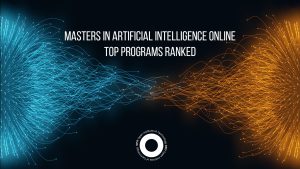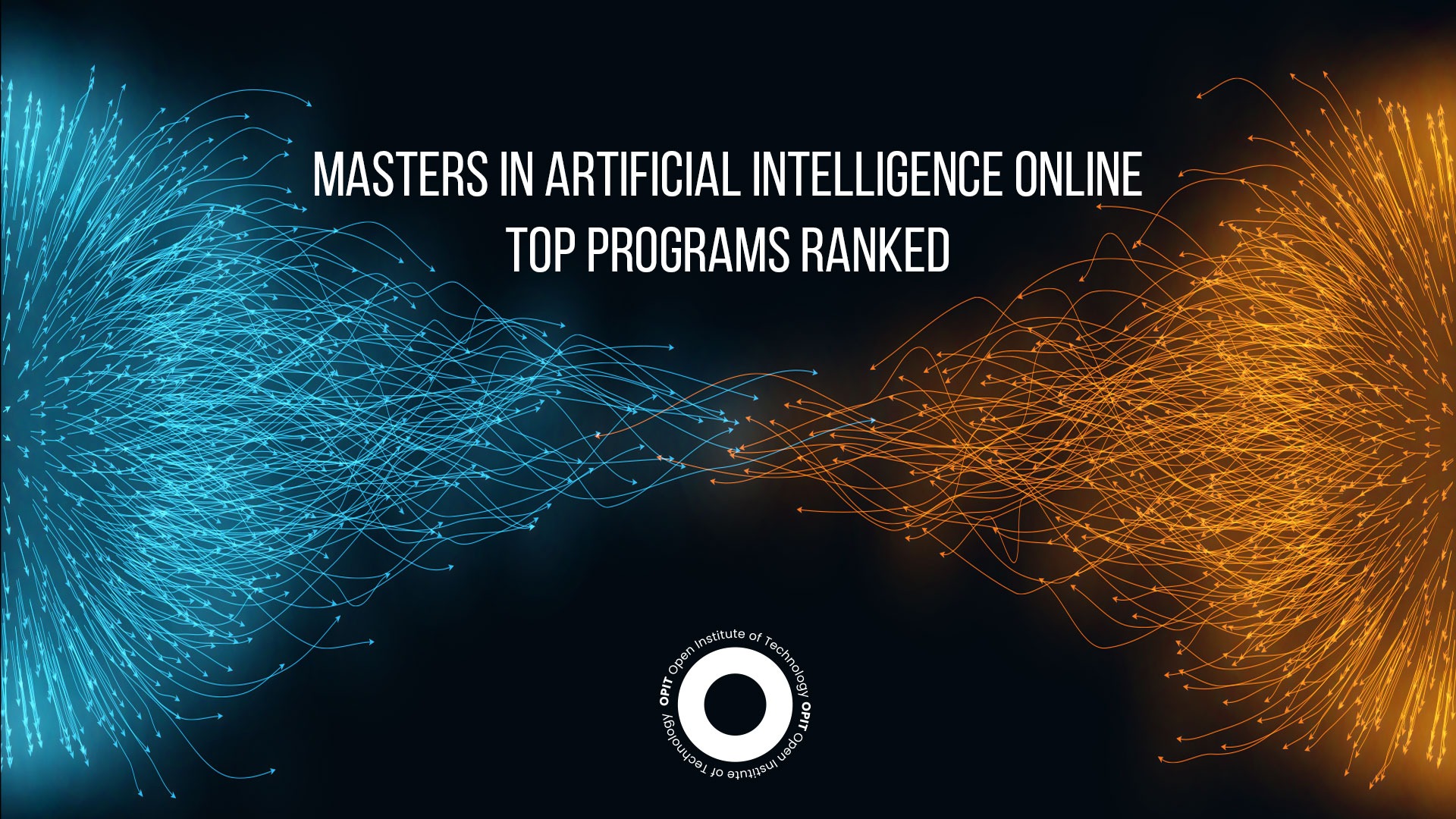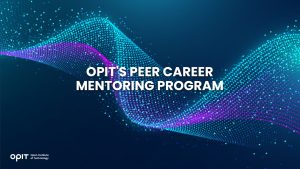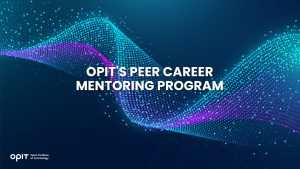

You may have heard the catchy phrase “data is the new oil” floating around. The implication is that data in the 21st century is what oil was in the 20th – the biggest industry around. And it’s true, as the sheer amount of data each person generates when they use the web, try out an app, or even buy from a store is digital “oil” for the companies collecting that data.
It’s also the fuel that powers the current (and growing) wave of artificial intelligence (AI) tools emerging in the market. From ChatGPT to the wave of text-to-speech tech flooding the market, everything hinges on information, and people who can harness that data through algorithms and machine learning practices are in high demand.
That’s where you can come in. By taking a Master’s degree in artificial intelligence online, you position yourself as one of the people who can help the new “digital oil” barons capitalize on their finds.
Factors to Consider When Choosing an Online AI Master’s Program
When choosing an artificial intelligence online Master’s, you have to consider more than the simple accessibility the course offers. These factors help you to weed out the also-ran programs from the ones that help you to advance your career:
- Accreditation – Checks for accreditation come in two flavors. First, you need to check the program provider’s credentials to ensure the degree you get from your studies is worth the paper on which it’s printed. Second, you have to confirm the accreditation you receive is something that employers actually want to see.
- Curriculum – What does your artificial intelligence online Master degree actually teach you? Answer that question and you can determine if the program serves the career goals you’ve set for yourself.
- Faculty Expertise – On the ground level, you want tutors with plenty of teaching experience and their own degrees in AI-related subjects. But dig beyond that to also discover if they have direct experience working with AI in industry.
- Program Format – A self-study artificial intelligence Master’s program’s online nature means they offer some degree of flexibility. But the course format plays a role in your decision, given that some rely solely on self-learning whereas others include examinations and live remote lectures.
- Tuition and Financial Aid – A Master’s degree costs quite a bit depending on area (prices range from €1,000 to €20,000 per year), so you need to be in the appropriate financial position. Many universities offer financial aid, such as scholarships, grants, and payment programs, that may help here.
- Career Support – You’re likely not studying for Master of artificial intelligence online for the joy of having a piece of paper on your wall. You want to build a career. Look for institutions that have strong alumni networks, connections within industry, and dedicated careers offices or services.
Top Online AI Master’s Programs Ranked
In choosing the best Master’s in artificial intelligence online programs, we looked at the above factors in addition to the key features of each program. That examination results in three online courses, each offering something a little different, that give you a solid grounding in AI.
Master in Applied Data Science & AI (OPIT)
Flexibility is the name of the game with OPIT’s program, as it’s fully remote and you get a choice between an 18-month course and a fast-tracked 12-month variant. The latter contains the same content as the former, with the student simply dedicating themselves to more intensive course requirements.
The program comes from an online institution that is accredited under both the Malta Qualification Framework and European Qualification Framework. As for the course itself, it’s the focus on real-life challenges in data science and AI that makes it so attractive. You don’t just learn theory. You discover how to apply that theory to the practical problems you’ll face when you enter the workforce.
OPIT has an admissions team who’ll guide you through getting onto the course, though you’ll need a BSc degree (in any field) and the equivalent of B2-level English proficiency to apply. If English isn’t your strong suit, OPIT also offers an in-house certification that you can take to get on the course. Financial aid is available through scholarships and funding, which you may need given that the program can cost up to €6,500, though discounts are available for those who apply early.
Master in Big Data, Artificial Intelligence, and Disruptive Technologies (Digital Age University)
If data is the new oil, Digital Age University’s program teaches you how to harness that oil and pump it in a way that makes you an attractive proposition for any employer. Key areas of study include the concept and utilization of Big Data (data analytics plays a huge role here), as well as the Python programming skills needed to create AI tools. You’ll learn more about machine learning models and get to grips with how AI is the big disruptor in modern business.
Tuition costs are reasonable, too, with this one-year course only costing €2,600. Digital Age University runs a tuition installment plan that lets you spread your costs out without worrying about being charged interest. Plus, your previous credentials may put you in line for a grant or scholarship that covers at least part of the cost. All first-year students are eligible for the 10% merit-based scholarship again, dependent on prior education). There’s also a 20% Global Scholarship available to students from Asia, Africa, the Middle East, and Latin American countries.
Speaking of credentials, you can showcase yours via the online application process or by scheduling a one-on-one call with one of the institution’s professors. The latter option is great if you’re conducting research and want to get a taste of what the faculty has to offer.
Master in Artificial Intelligence (Three Points Digital Business School)
Three Points Digital Business School sets its stall out early by pointing out that 83% of companies say they’ll create new jobs due to AI in the coming years. That’s its way of telling you that its business-focused AI course is the right choice for getting one of those jobs. After teaching the fundamentals of AI, the course moves into showing you how to create AI and machine learning models and, crucially, how to apply those models in practical settings. By the end, you’ll know how to program chatbots, virtual assistants, and similar AI-driven tools.
It’s the most expensive program on this list, clocking in at €7,500 for a one-year course that delivers 60 ECTS credits. However, it’s a course targeted at mature students (half of the current students are 40 years old), and it’s very much career-minded. That’s exemplified by Three Points’ annual ThinkDigital Summit, which puts some of the leading minds in AI and digital innovation in front of students.
Admission is tougher than for many other Master’s in artificial intelligence online programs as you go through an interview process in addition to submitting qualifications. Every candidate is manually assessed via committee, with your experience and business know-how playing as much of a role as any technical qualifications you have.
Tips for Success in an Online AI Master’s Program
Let’s assume you’ve successfully applied to an artificial intelligence online Master’s program. That’s the first step in a long, often complex, journey. Here are some tips to keep in mind and set up for the future:
- Manage your time properly by scheduling your study, especially given that online courses rely on students having the discipline needed for self-learning.
- Build relationships with faculty and peers who may be able to connect you to job opportunities or have ideas for starting their own businesses.
- Stay up-to-date on what’s happening with AI because this high-paced industry can leave people who assume what they know is enough behind.
- Pursue real-world experience wherever you can, both through the practical assessments a program offers and internship programs that you can add to your CV.
Career Opportunities With a Master’s in Artificial Intelligence
You need to know what sorts of roles are available on the digital “oil rigs” of today and the future. Those who have an artificial intelligence online Master degree take roles as varied as data analyst, software engineer, data scientist, and research scientist.
Better yet, those roles are spread across almost all industries. Grand View Research tells us that we can expect the AI market to enjoy a 37.3% compound annual growth rate between 2023 and 2030, with that growth making AI-based roles available on a near-constant basis. Salary expectations are likely to increase along with that growth, with the current average of around €91,000 for an artificial intelligence engineer (figures based on Germany’s job market) likely to be a baseline for future growth.
Find the Right Artificial Intelligence Master’s Programs Online
We’ve highlighted three online Master’s programs with a focus on AI in this article, each offering something different. OPIT’s course leans heavily into data science, giving you a specialization to go along with the foundational knowledge you’ll gain. Digital Age University’s program places more of a focus on Big Data, with Three Points Digital Business School living up to its name by taking a more business-oriented approach.
Whatever program you choose (and it could be one other than the three listed here), you must research the course based on the factors like credentials, course content, and quality of the faculty. Put plenty of time into this research process and you’re sure to find a program that aligns with your goals.
Related posts

Source:
- Raconteur, published on November 06th, 2025
Many firms have conducted successful Artificial Intelligence (AI) pilot projects, but scaling them across departments and workflows remains a challenge. Inference costs, data silos, talent gaps and poor alignment with business strategy are just some of the issues that leave organisations trapped in pilot purgatory. This inability to scale successful experiments means AI’s potential for improving enterprise efficiency, decision-making and innovation isn’t fully realised. So what’s the solution?
Although it’s not a magic bullet, an AI operating model is really the foundation for scaling pilot projects up to enterprise-wide deployments. Essentially it’s a structured framework that defines how the organisation develops, deploys and governs AI. By bringing together infrastructure, data, people, and governance in a flexible and secure way, it ensures that AI delivers value at scale while remaining ethical and compliant.
“A successful AI proof-of-concept is like building a single race car that can go fast,” says Professor Yu Xiong, chair of business analytics at the UK-based Surrey Business School. “An efficient AI technology operations model, however, is the entire system – the processes, tools, and team structures – for continuously manufacturing, maintaining, and safely operating an entire fleet of cars.”
But while the importance of this framework is clear, how should enterprises establish and embed it?
“It begins with a clear strategy that defines objectives, desired outcomes, and measurable success criteria, such as model performance, bias detection, and regulatory compliance metrics,” says Professor Azadeh Haratiannezhadi, co-founder of generative AI company Taktify and professor of generative AI in cybersecurity at OPIT – the Open Institute of Technology.
Platforms, tools and MLOps pipelines that enable models to be deployed, monitored and scaled in a safe and efficient way are also essential in practical terms.
“Tools and infrastructure must also be selected with transparency, cost, and governance in mind,” says Efrain Ruh, continental chief technology officer for Europe at Digitate. “Crucially, organisations need to continuously monitor the evolving AI landscape and adapt their models to new capabilities and market offerings.”
An open approach
The most effective AI operating models are also founded on openness, interoperability and modularity. Open source platforms and tools provide greater control over data, deployment environments and costs, for example. These characteristics can help enterprises to avoid vendor lock-in, successfully align AI to business culture and values, and embed it safely into cross-department workflows.
“Modularity and platformisation…avoids building isolated ‘silos’ for each project,” explains professor Xiong. “Instead, it provides a shared, reusable ‘AI platform’ that integrates toolchains for data preparation, model training, deployment, monitoring, and retraining. This drastically improves efficiency and reduces the cost of redundant work.”
A strong data strategy is equally vital for ensuring high-quality performance and reducing bias. Ideally, the AI operating model should be cloud and LLM agnostic too.
“This allows organisations to coordinate and orchestrate AI agents from various sources, whether that’s internal or 3rd party,” says Babak Hodjat, global chief technology officer of AI at Cognizant. “The interoperability also means businesses can adopt an agile iterative process for AI projects that is guided by measuring efficiency, productivity, and quality gains, while guaranteeing trust and safety are built into all elements of design and implementation.”
A robust AI operating model should feature clear objectives for compliance, security and data privacy, as well as accountability structures. Richard Corbridge, chief information officer of Segro, advises organisations to: “Start small with well-scoped pilots that solve real pain points, then bake in repeatable patterns, data contracts, test harnesses, explainability checks and rollback plans, so learning can be scaled without multiplying risk. If you don’t codify how models are approved, deployed, monitored and retired, you won’t get past pilot purgatory.”
Of course, technology alone can’t drive successful AI adoption at scale: the right skills and culture are also essential for embedding AI across the enterprise.
“Multidisciplinary teams that combine technical expertise in AI, security, and governance with deep business knowledge create a foundation for sustainable adoption,” says Professor Haratiannezhadi. “Ongoing training ensures staff acquire advanced AI skills while understanding associated risks and responsibilities.”
Ultimately, an AI operating model is the playbook that enables an enterprise to use AI responsibly and effectively at scale. By drawing together governance, technological infrastructure, cultural change and open collaboration, it supports the shift from isolated experiments to the kind of sustainable AI capability that can drive competitive advantage.
In other words, it’s the foundation for turning ambition into reality, and finally escaping pilot purgatory for good.

The Open Institute of Technology (OPIT) is the perfect place for those looking to master the core skills and gain the fundamental knowledge they need to enter the exciting and dynamic environment of the tech industry. While OPIT’s various degrees and courses unlock the doors to numerous careers, students may not know exactly which line of work they wish to enter, or how, exactly, to take the next steps.
That’s why, as well as providing exceptional online education in fields like Responsible AI, Computer Science, and Digital Business, OPIT also offers an array of career-related services, like the Peer Career Mentoring Program. Designed to provide the expert advice and support students need, this program helps students and alumni gain inspiration and insight to map out their future careers.
Introducing the OPIT Peer Career Mentoring Program
As the name implies, OPIT’s Peer Career Mentoring Program is about connecting students and alumni with experienced peers to provide insights, guidance, and mentorship and support their next steps on both a personal and professional level.
It provides a highly supportive and empowering space in which current and former learners can receive career-related advice and guidance, harnessing the rich and varied experiences of the OPIT community to accelerate growth and development.
Meet the Mentors
Plenty of experienced, expert mentors have already signed up to play their part in the Peer Career Mentoring Program at OPIT. They include managers, analysts, researchers, and more, all ready and eager to share the benefits of their experience and their unique perspectives on the tech industry, careers in tech, and the educational experience at OPIT.
Examples include:
- Marco Lorenzi: Having graduated from the MSc in Applied Data Science and AI program at OPIT, Marco has since progressed to a role as a Prompt Engineer at RWS Group and is passionate about supporting younger learners as they take their first steps into the workforce or seek career evolution.
- Antonio Amendolagine: Antonio graduated from the OPIT MSc in Applied Data Science and AI and currently works as a Product Marketing and CRM Manager with MER MEC SpA, focusing on international B2B businesses. Like other mentors in the program, he enjoys helping students feel more confident about achieving their future aims.
- Asya Mantovani: Asya took the MSc in Responsible AI program at OPIT before taking the next steps in her career as a Software Engineer with Accenture, one of the largest IT companies in the world, and a trusted partner of the institute. With a firm belief in knowledge-sharing and mutual support, she’s eager to help students progress and succeed.
The Value of the Peer Mentoring Program
The OPIT Peer Career Mentoring Program is an invaluable source of support, inspiration, motivation, and guidance for the many students and graduates of OPIT who feel the need for a helping hand or guiding light to help them find the way or make the right decisions moving forward. It’s a program built around the sharing of wisdom, skills, and insights, designed to empower all who take part.
Every student is different. Some have very clear, fixed, and firm objectives in mind for their futures. Others may have a slightly more vague outline of where they want to go and what they want to do. Others live more in the moment, focusing purely on the here and now, but not thinking too far ahead. All of these different types of people may need guidance and support from time to time, and peer mentoring provides that.
This program is also just one of many ways in which OPIT bridges the gaps between learners around the world, creating a whole community of students and educators, linked together by their shared passions for technology and development. So, even though you may study remotely at OPIT, you never need to feel alone or isolated from your peers.
Additional Career Services Offered by OPIT
The Peer Career Mentoring Program is just one part of the larger array of career services that students enjoy at the Open Institute of Technology.
- Career Coaching and Support: Students can schedule one-to-one sessions with the institute’s experts to receive insightful feedback, flexibly customized to their exact needs and situation. They can request resume audits, hone their interview skills, and develop action plans for the future, all with the help of experienced, expert coaches.
- Resource Hub: Maybe you need help differentiating between various career paths, or seeing where your degree might take you. Or you need a bit of assistance in handling the challenges of the job-hunting process. Either way, the OPIT Resource Hub contains the in-depth guides you need to get ahead and gain practical skills to confidently move forward.
- Career Events: Regularly, OPIT hosts online career event sessions with industry experts and leaders as guest speakers about the topics that most interest today’s tech students and graduates. You can join workshops to sharpen your skills and become a better prospect in the job market, or just listen to the lessons and insights of the pros.
- Internship Opportunities: There are few better ways to begin your professional journey than an internship at a top-tier company. OPIT unlocks the doors to numerous internship roles with trusted institute partners, as well as additional professional and project opportunities where you can get hands-on work experience at a high level.
In addition to the above, OPIT also teams up with an array of leading organizations around the world, including some of the biggest names, including AWS, Accenture, and Hype. Through this network of trust, OPIT facilitates students’ steps into the world of work.
Start Your Study Journey Today
As well as the Peer Career Mentoring Program, OPIT provides numerous other exciting advantages for those who enroll, including progressive assessments, round-the-clock support, affordable rates, and a team of international professors from top universities with real-world experience in technology. In short, it’s the perfect place to push forward and get the knowledge you need to succeed.
So, if you’re eager to become a tech leader of tomorrow, learn more about OPIT today.
Have questions?
Visit our FAQ page or get in touch with us!
Write us at +39 335 576 0263
Get in touch at hello@opit.com
Talk to one of our Study Advisors
We are international
We can speak in:


